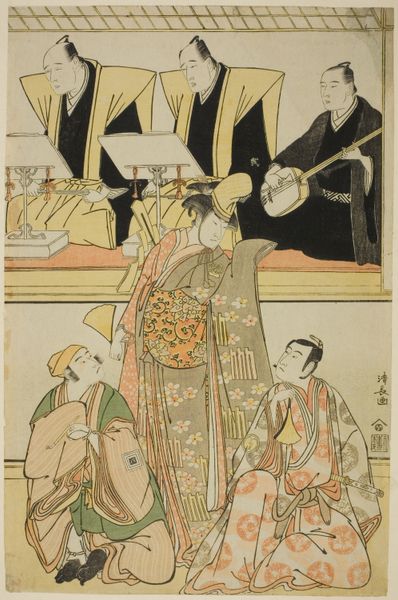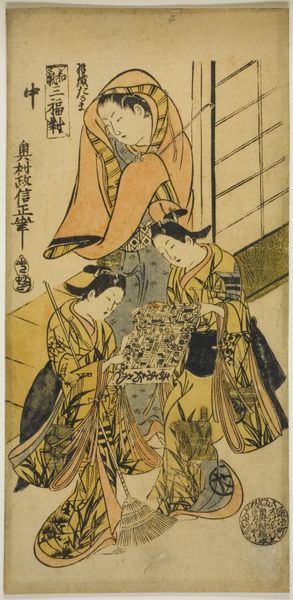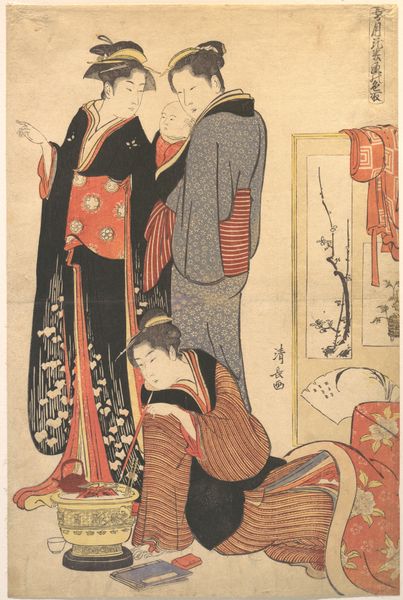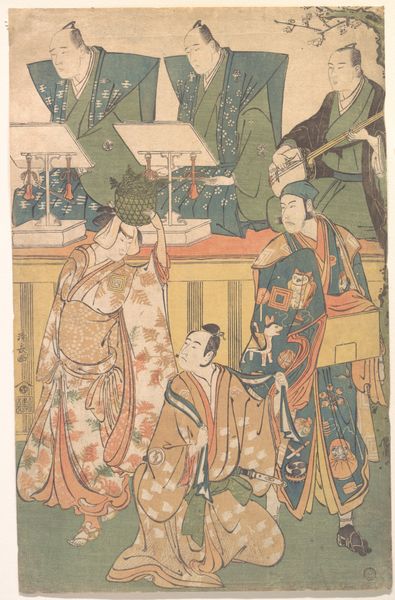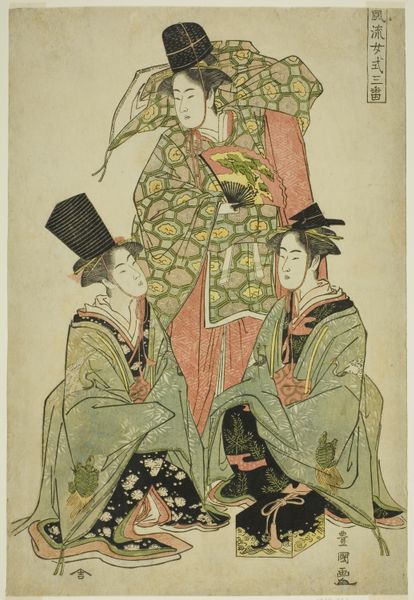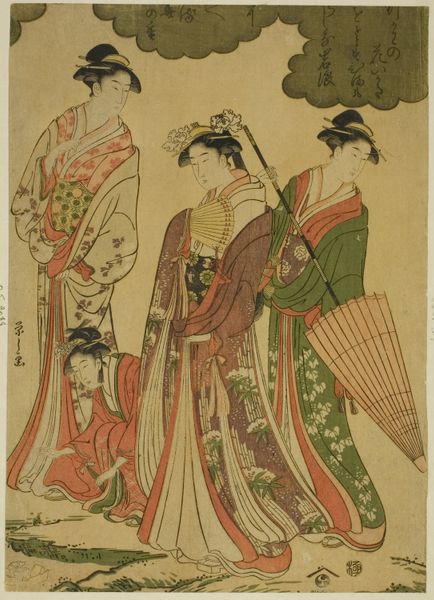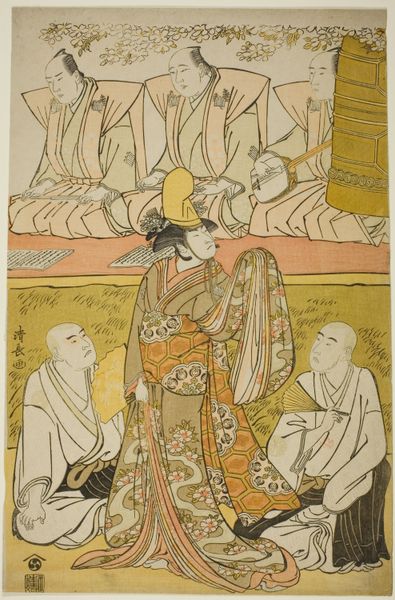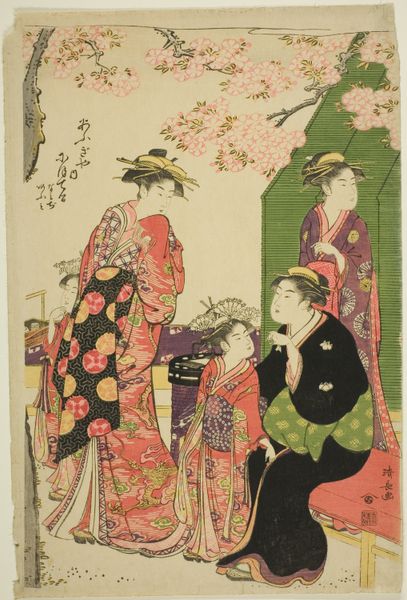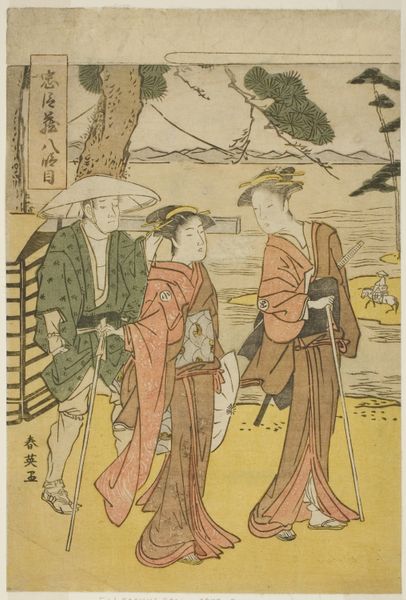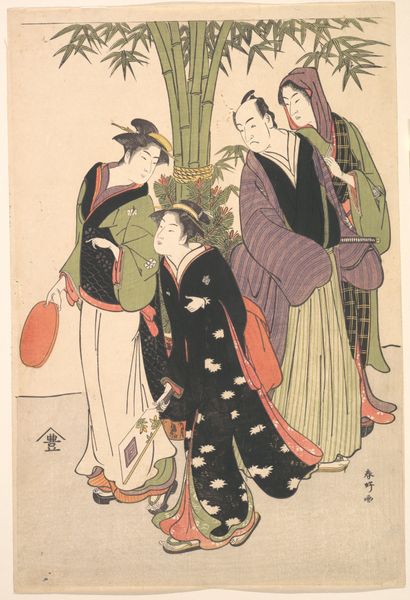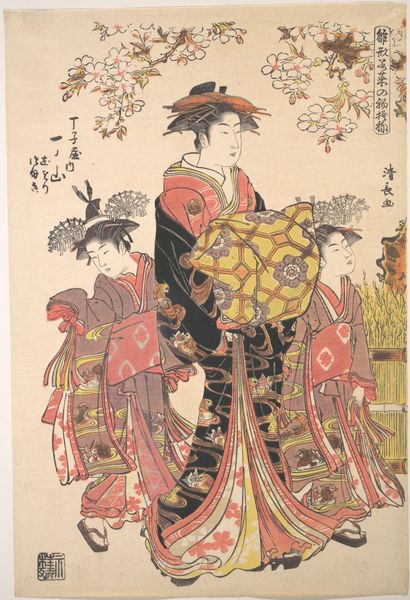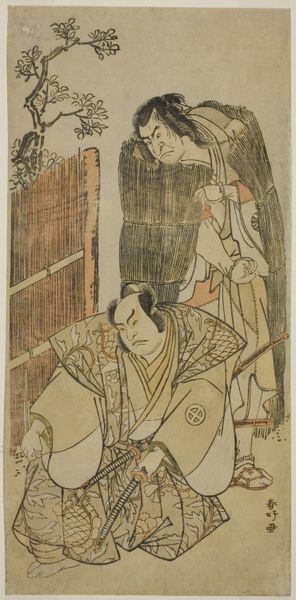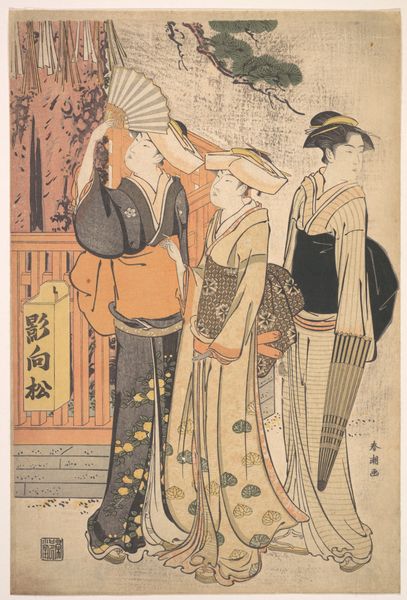
The Actors Segawa Kikunojo III as Koito, Sawamura Sojuro III as the monk Sainenbo, and Ichikawa Monnosuke II as the monk Renseibo, in the shosa "Mata Saku Hana Museume Dojoji," performed at the Nakamura Theater in the fourth month, 1783 1783
0:00
0:00
#
toned paper
#
ink painting
# print
#
asian-art
#
junji ito style
#
japan
#
handmade artwork painting
#
fluid art
#
linocut print
#
naive art
#
watercolour illustration
#
sketchbook art
#
watercolor
Dimensions: 38.2 × 25.2 cm
Copyright: Public Domain
Curator: Look closely at Torii Kiyonaga's 1783 woodblock print, "The Actors Segawa Kikunojo III as Koito, Sawamura Sojuro III as the monk Sainenbo, and Ichikawa Monnosuke II as the monk Renseibo, in the shosa 'Mata Saku Hana Museume Dojoji,'" which can be found here at the Art Institute of Chicago. Editor: The immediate impression is quite striking; the positioning of the figures is dynamic, almost like a stage set, while the limited color palette gives a subdued, yet elegant feel to the composition. The texture of the paper, combined with the lines of the printing, seem very pronounced, and integral to the mood of the artwork. Curator: Precisely. Kiyonaga masterfully employs a shallow depth of field, compressing the actors and musicians into the pictorial plane. Note how the linear precision of their garments contrasts with the organic quality of the surrounding elements, drawing our attention to the formalized Kabuki roles played in the shosa performance. Editor: Focusing on the materials, the use of woodblocks reveals so much. These tools are evidence of collaboration among designers, carvers, printers, and publishers. We need to also recognize how printmaking provided access for a burgeoning middle class in Edo Japan, and facilitated the dissemination of cultural capital beyond courtly circles. The repetitive patterns and limited color options, seemingly so deliberate and meticulous, surely stemmed from constraints of available material? Curator: That consideration of societal reach is important, but the artist's handling of color is itself highly articulate; a restricted range actually intensifies visual relationships between characters, and it amplifies the drama intrinsic to their respective theatrical functions. The floral motifs, juxtaposed against geometrical textiles, highlight this further, wouldn't you agree? Editor: The materiality also speaks to consumption patterns and economic exchange. Did particular dyestuffs or papers bear symbolic weight or dictate affordability? How would the act of collecting and displaying such prints within domestic interiors negotiate status or taste among owners? That's important to also take into account. Curator: Yes, of course, and yet to ignore the pure formalism is to diminish our comprehension; through masterful compression and calculated delineation, Kiyonaga encapsulates a nuanced narrative about performance—itself already a layered signifier—into a tightly calibrated arrangement. Editor: Yes, ultimately, it's about locating the intersection between the material realities of production and the sophisticated layering of symbolic meaning in the shosa traditions. Understanding that it reflects not only artistic intentions but economic and social dynamics which can better contextualize the artwork’s creation and significance.
Comments
No comments
Be the first to comment and join the conversation on the ultimate creative platform.
